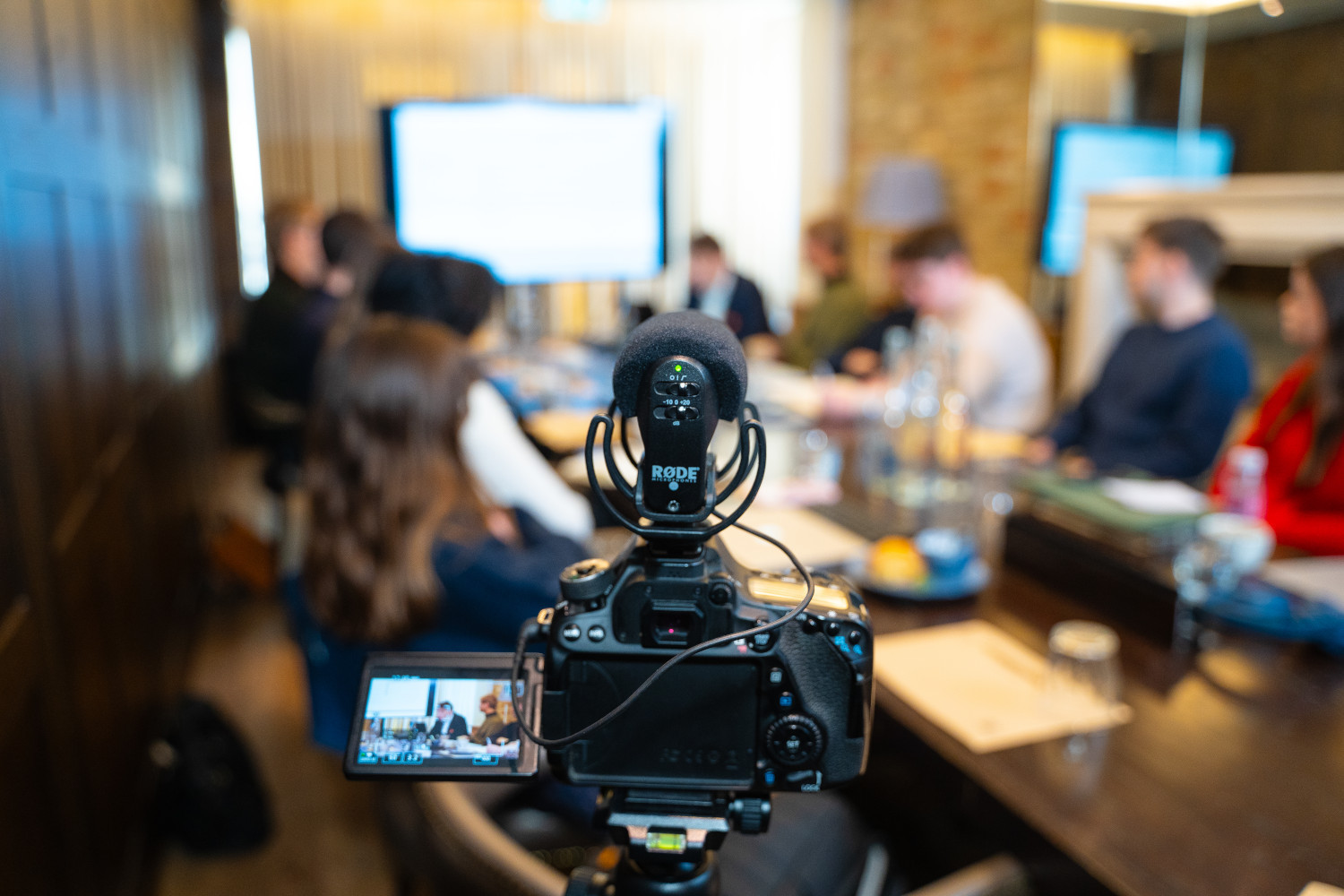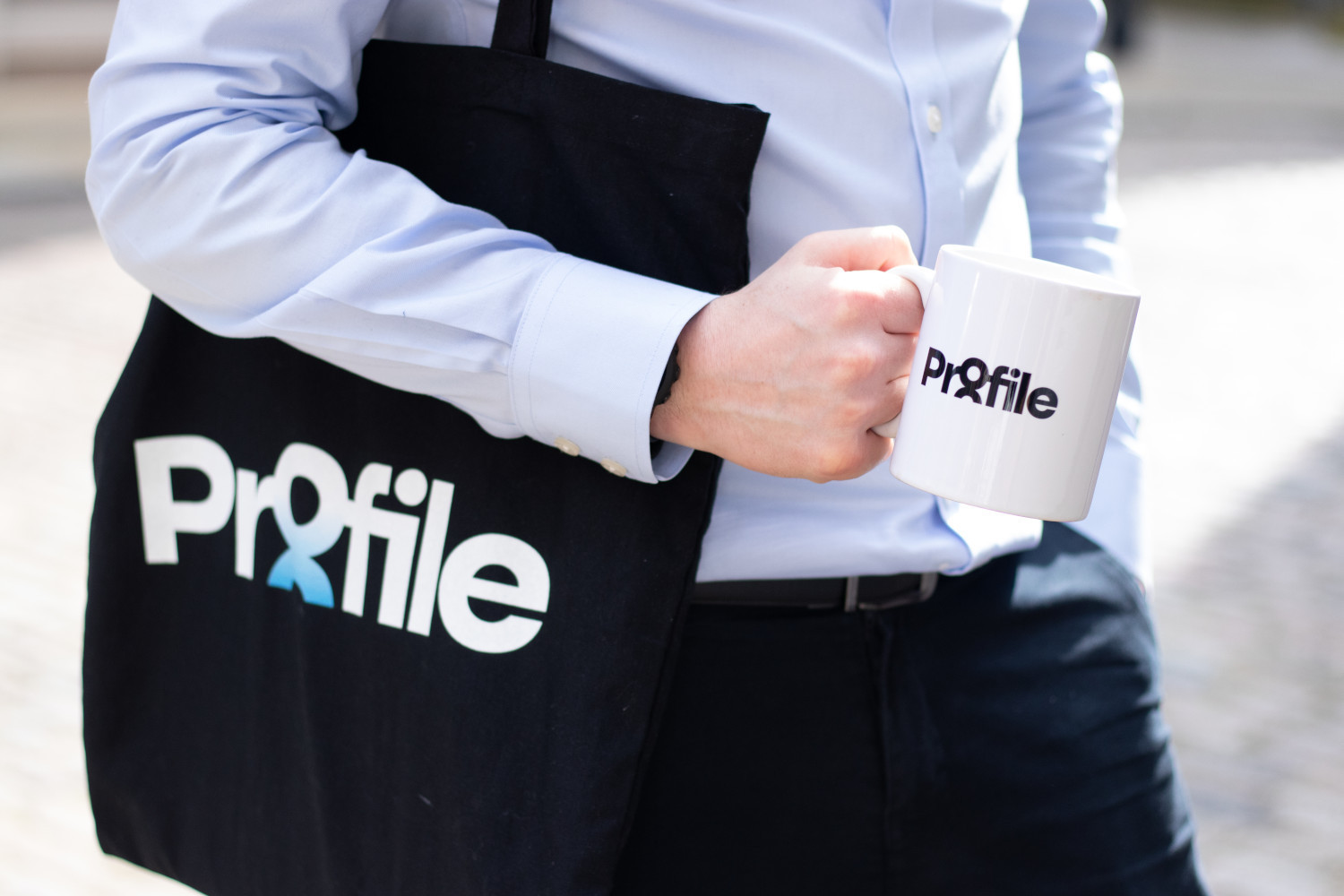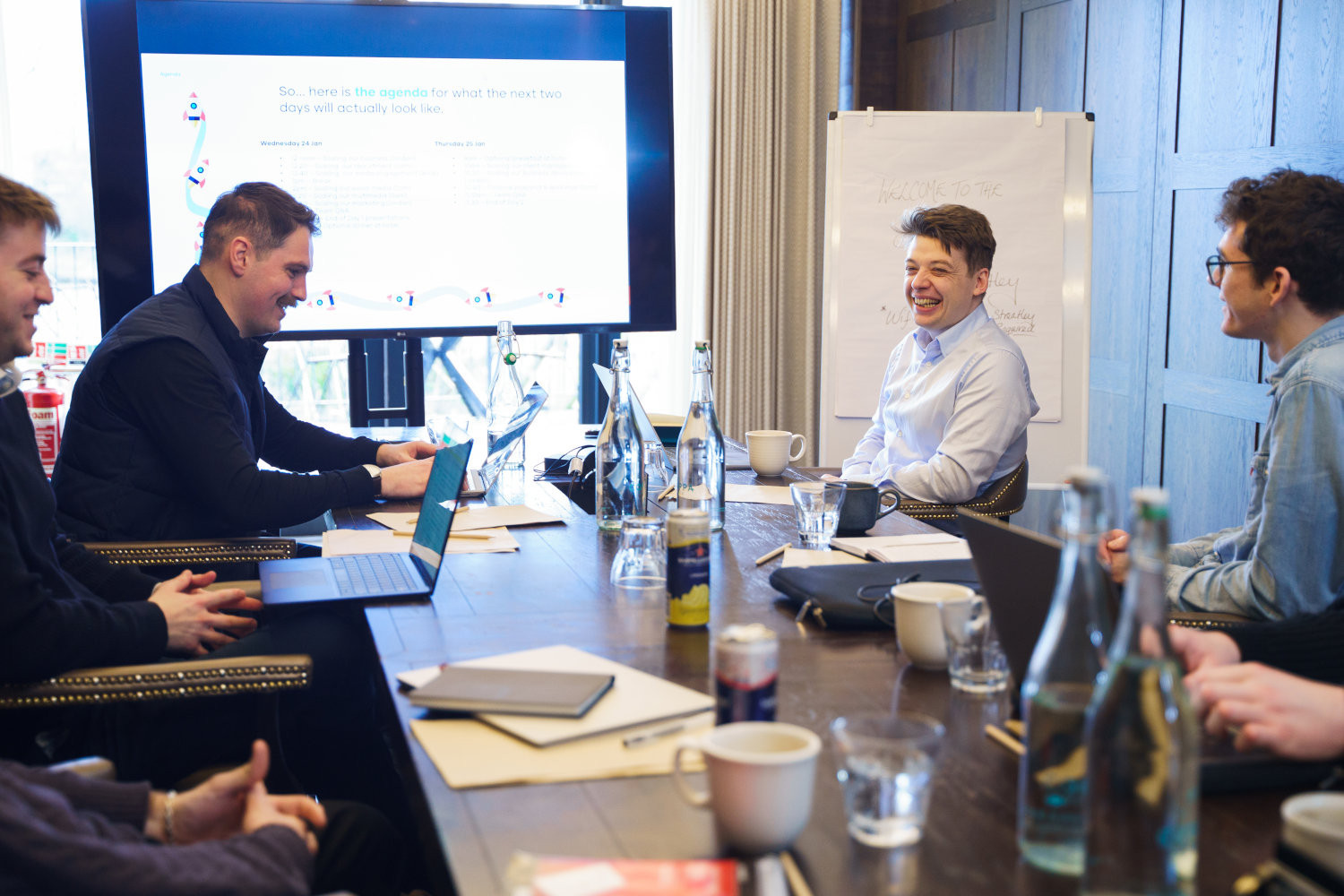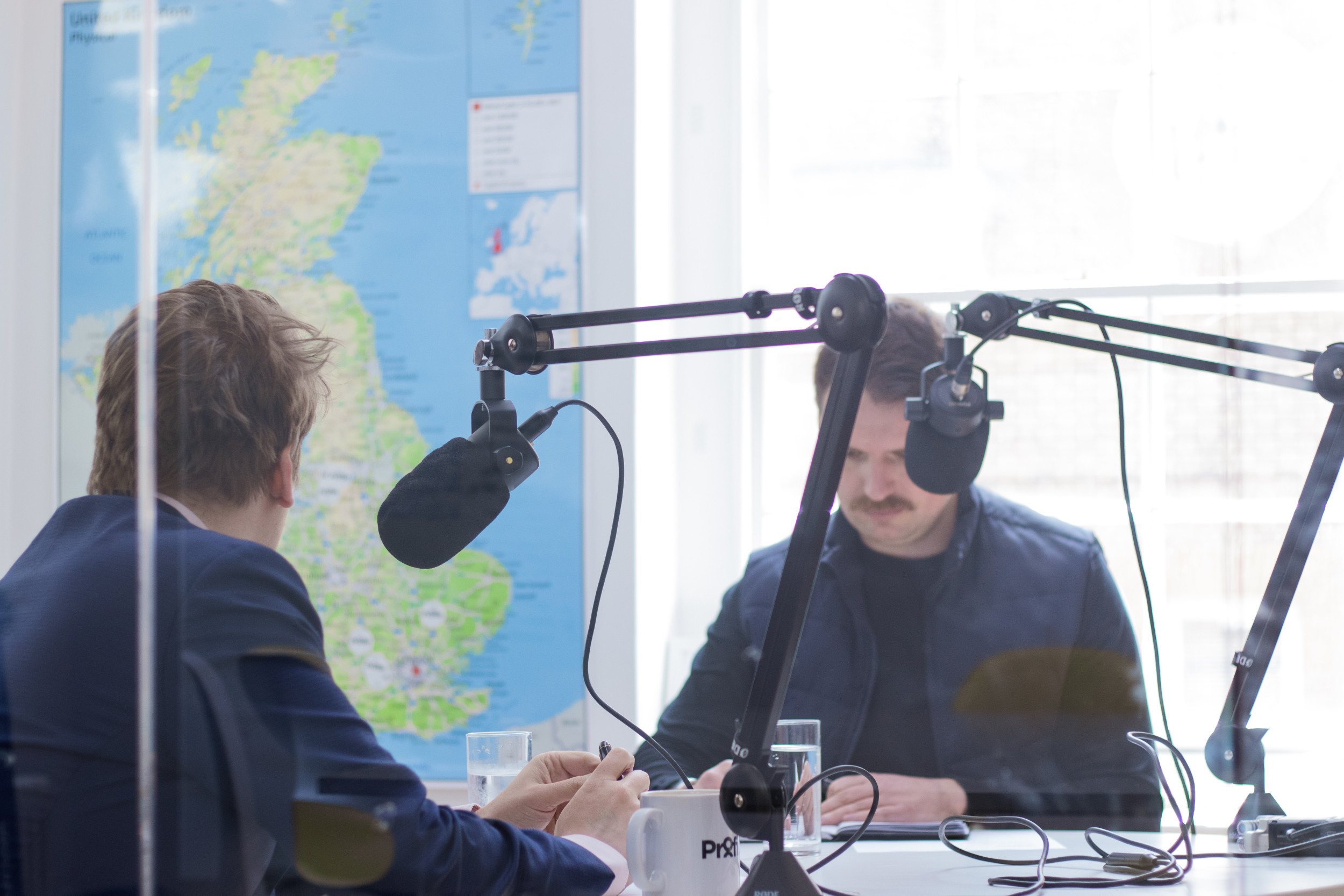Explainer
What Does a PR Agency Do?
Wondering what PR agencies really do? Learn how they manage reputations, build media relationships, and drive influence in this in-depth guide.

[NEW INSIGHT] Personal branding for CEOs vs personal branding: what’s the real difference
PR agencies manage how individuals and businesses communicate with the public. They build strong stakeholder relationships and limit reputational damage, which, in today’s digital world, can occur in minutes if companies aren’t careful.
Yet, if you were to ask someone outside of the media industry what a PR agency does, they’d likely admit they’re unsure. After all, agencies vary wildly in size, serve vastly different industries, and their ways of working are constantly evolving.
Admittedly, grasping the industry isn't easy.
As such, this article delves deeper into how agencies support clients, from crisis management to executive profiling, to give you a better picture.
By the end of it, you’ll have a clearer understanding of what PR agencies do day-to-day, whether you're looking for a career or seeking support to grow your business.
At first glance, many people confuse PR with marketing, considering how closely they interlink.
Both use strategic messaging to shape perceptions and drive influence across various channels.
But whereas PR aims to build trust, credibility, and authority, marketing focuses solely on promoting products or services to drive sales.
Both professions also work with significantly different budgets.
Businesses will allocate between 5% to 20% of their revenue on marketing, whereas PR tends to be more cost-effective, often delivering impact without the need for a large media spend.
Hence, companies are allocating more of their budgets to PR than ever before, with the industry seeing a compound annual growth rate (CAGR) of 6.1% between 2024 and 2025.
This isn't to say that PR can or should replace marketing. But it does show that PR is valued far more equally than it once was.

Other than budget-friendliness, industry demand has been driven by various other factors.
The modern media landscape is much more intensive than it once was, with companies required to maintain a constant visible presence across various channels.
Audiences want businesses to share expert insights in a more digestible way.
Crises have become commonplace due to geopolitical tensions, economic downturns, misinformation, and even miscommunication.
CSR will be a key consideration for the foreseeable future, making transparency essential.
Without hiring an expert to mitigate these challenges, companies risk spreading themselves too thin or making costly missteps that could damage key relationships.
In the case of CSR, this can lead to reputational damage that jeopardises the future of a business.
When working with clients, a PR agency will separate their objectives into various campaigns.
For instance, an upcoming product launch will look very different to a campaign that aims to improve brand perception in the wake of a crisis.
There will need to be honest conversations about the feasibility of objectives and the timeline for impact, including target audiences, key messaging, communications channels, and the level of input and approval required from the client.
The agency will also set clear KPIs, such as media coverage and social media followers that the campaign could lead to, as well as explain how it might unlock customers, talent, investors, and key partners.
The length of each campaign will vary massively, too. A product launch might last months, whereas shifting negative perceptions following a crisis can take years.
As such, working with PR agencies requires patience. There’s never a quick fix.

All PR campaigns need a central message. Without it, the campaign risks being unfocused, won't resonate with audiences, and can weaken future efforts.
For this reason, it's normal for agencies to take intensive notes during meetings to outline what stage of growth the client is at, the challenges they face, and any expert insights that could differentiate them.
For instance, in the case of a product launch for an AI chip, an agency might focus on its client's commitment to eco-friendly components, which would help generate cut-through with both tech and sustainability media.
Of course, it's crucial to avoid over-strategising. But this initial foundation helps craft an identity that audiences can consistently recognise and trust.
Of course, corporate communications is just one aspect of PR. Many agencies now specialise in supporting individuals, too, in the form of executive profiling campaigns.
These campaigns can be a good way for founders and CEOs to make their brand more memorable, attract better talent and investment, or support the launch of a new venture.
Most of the time, executive profiling campaigns like these will hinge on thought leadership, a strategy whereby executives share insights with audiences to position themselves as an expert.
Along as these insights are bold and original, they can be a great way to catalyse wider change, such as by encouraging governments to introduce fairer regulation or promoting ESG.
In cases like these, agencies will work particularly closely with their clients to gain a deeper understanding of their industry, expertise, target audience, and tone to develop content that feels personal and genuine to them.

Media engagement is often considered the bread and butter of PR, with broadcast coverage being the pinnacle moment for most clients. It's what many hire agencies for, above all else.
However, there's a common misconception that agencies have a playbook of contacts they can wave a magic wand at to secure coverage. This isn't the case.
While years of relationships certainly help clients stand out among competition, most coverage is secured because PR agencies are skilled storytellers and technical writers who know how to excite journalists about the prospect of writing about their clients.
The best agencies can even craft pitches that convince journalists they don't already know, with a strong angle, timely intervention, supporting data, and a credible source.
A strong angle grounds a story so that it fits seamlessly within the current media narrative. A typical example might be the latest COP convention or a government budget.
A timely intervention reacts to this angle in the form of an announcement or thought-provoking opinion.
Supporting data strengthens the pitch, legitimising any claims and reducing research time for journalists.
A credible source, such as a quote from a CEO, adds a personal touch and makes the story more tangible.
In addition to this, PR agencies know which tripwires to avoid, such as poor email and phone call etiquette.
Once a PR agency secures a media opportunity, the next steps can vary depending on the opportunity.
In the case of a press release, a corporate news announcement an agency drafts and sends to the media, there's usually no need for further correspondence other than a thank you to the journalist who places it online.
But, with an interview, the agency's client will need to be briefed on the opportunity.
In a briefing, the agency will provide the speaker with background information on the journalist, key talking points they should discuss, and any other useful information.
Meanwhile, a broadcast interview that’s recorded live will require an agency representative to attend the studio alongside the speaker to inspire confidence and ensure everything runs smoothly.
After these interviews, the agency will debrief their client.
Here, they will discuss what went well and what can be improved in the future, such as whether the client had good posture throughout the interview, since little details matter.
Sometimes, an agency will pitch an opinion article they research and draft in their client's name.
In this case, little input is needed from the client other than signing off on the final draft before it's published.

Since 2020, there has been a 34% increase in the search term “digital PR”. Front-and-centre to this uptick has been increased demand for social media management.
Why? Social media allows for 24/7, two-way communication with audiences, allowing companies to regularly share their values and achievements or swiftly react to new trends.
When social media is managed well and brands have a positive impact on audiences, 7 in 10 people are more likely to recommend it to others.
As a result, many PR agencies now have dedicated social media units whose sole responsibility is to craft powerful, on-brand posts that maintain transparency and instigate follower growth.
In one week, posts might focus on campaign messaging.
In another week, they might comment on workplace culture.
Ultimately, this diversification is key to cater to a client's wide-ranging audiences.
Modern-day PR agencies are increasingly offering all-in-one packages that implement multimedia along with media and social media management.
On one hand, multimedia delivers clients more value.
On the other, it creates more accessible, diverse storytelling, improving engagement.
For instance, LinkedIn posts incorporating videos receive 1.4x more engagement than any other content on the platform.
Meanwhile, high-quality imagery can help clients appear more professional, improving media pitches and online visibility.
While they don’t happen often, PR agencies also support their clients with various events.
Media roundtables allow clients to introduce their business, vision, and insights to build relationships with journalists who might work on future stories.
A panel event invites a host of industry stakeholders to join a client in debating an ongoing industry issue or trend. This is common for political campaigns.
A press conference takes place when a company releases an important statement before taking questions. This usually takes place during a sale, when a senior appointment is made, or during a crisis.
Media tours invite journalists to visit a newly opened factory, lab, or store for a news story, such as a product launch.
In each of these cases, PR agencies will invite and confirm guest attendance, book locations, plan catering, and hire any sound or recording equipment if necessary.
Agencies will also brief their client to ensure they are fully prepared for the occasion and capture multimedia content to repurpose for blogs, social media, and marketing materials.

PR agencies can vary in size significantly, depending on the industries they serve and the services they offer.
For instance, an agency that has dedicated tech, finance, sustainability, and healthcare units, operating in countries all over the globe, can have a team of over 5,000 employees.
Alternatively, a boutique agency dedicated to one sector can have a team as small as five.
But usually, teams will encompass an account director and/or client manager who will regularly liaise with clients, strategise campaigns, and manage workflows.
In addition to this, several executives will execute client work, including media engagement and social media copywriting.
While the industry is always changing, right now, it's typically very young, considering almost half of practitioners are aged between 16 and 34 years old.
Additionally, 60% of industry professionals are female.
Whether PR is right for your business depends on your expectations.
If you want a PR agency to drive lead gen, it probably isn't for you. The same goes if you expect immediate coverage in reputable publications, regardless of your stature.
At the end of the day, PR is not about quick wins. It's about building trust, credibility, and lasting visibility with storytelling.
If you approach it with the right mindset, collaborate closely with your agency, and invest in the process, the results can transform your brand's reputation and influence.
On the other hand, if you're looking for a career, hopefully the fast-paced, varied, and youthful environment in PR pulls you in. As biased as we are, we couldn't recommend it more.